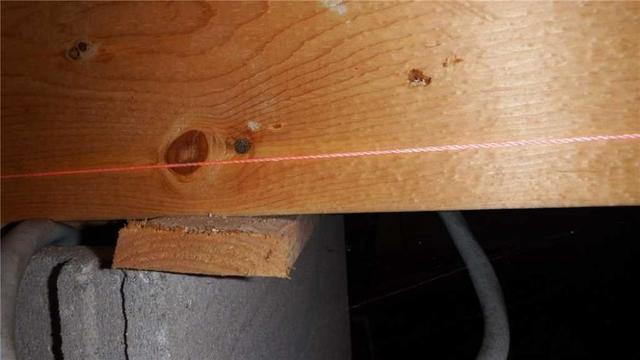Your House is Talking. Are You Listening?

If your house could talk it would tell you that it’s time for an inspection. Most of us aren’t alarmed by a wall crack in one of our rooms. What if it were a series of cracks in your home? Well your home is comprised of so much more than your above ground living space. You may not go to bed thinking about your foundation or basement, but your foundation is what anchors your home to the dirt and stabilizes your home above. When there are changes to the underground environment, it will eventually reveal itself upstairs.
Here are upstairs signs of downstairs trouble:
Horizontal Cracks

A horizontal crack is your home on a megaphone telling you that things are shifting below ground. These cracks are usually found around archways or doorways which are usually weakened spots in the dry wall. Wall cracks can occur in older and newer homes and are usually just an indication that your home is settling, especially in newer construction. Settling is understandable because the soil surrounding your home is constantly shifting. It is important to wait to repair cracks in a newer home until the home has settled down – literally. These cracks can also be a sign of something more serious. The kind of serious that costs you money further down the line. A settling foundation can also cause cracks in your foundation walls. Horizontal cracks in your block foundation wall could be a sign of a bowing wall. Bowing walls could eventually lead to wall failure. Addressing these structural issues early will prevent wall collapse.
Vertical Cracks

Vertical cracks are less worrisome in the sense that they’re caused by natural construction settlement. They can be considered whispers from your home to keep an eye out for structural issues. One way to keep track of expansion is to make a small mark at the tail of the crack and see if it continues to extend. It could indicate some more serious settling in the foundation.
Raised Baseboards

Your home is once again on a megaphone yelling, “MIND THE GAP!” Gaps between the baseboard and floor are not just unsightly, they are an indicator that your foundation is sinking along with your floor. Your baseboard is attached to the wall and so while your floor sinks along with the foundation, the baseboard stays in place at the original floor level. When our system design specialists come to your home for an inspection, these gaps are a dead giveaway that they need to inspect your foundation walls.
Sloping Floors
One last warning siren from your home are sloping, slanting floors. When your foundation settles, it most likely will not settle evenly. When a slab settles into the surrounding soil one side will settle lower than the other. This impacts your foundation walls and may cause them to weaken and bow. Above ground your floors are now uneven and causing more than one problem for your family.
We have a few solutions to help stabilize your walls and provide extra support like PowerBraces and GeoLocks that attach directly to your walls and allow us to stabilize them and help straighten them over time. We can also help if your foundation slab has started to settle by installing piers that are laid in stable soil and can be used to lift the home.
We’re in the business of listening to homes and helping you identify the upstairs signs of foundation and settlement issues down below. Schedule a free inspection with us to address those structural issues and to give you and your family the peace of mind that comes with a stable, safe home.










